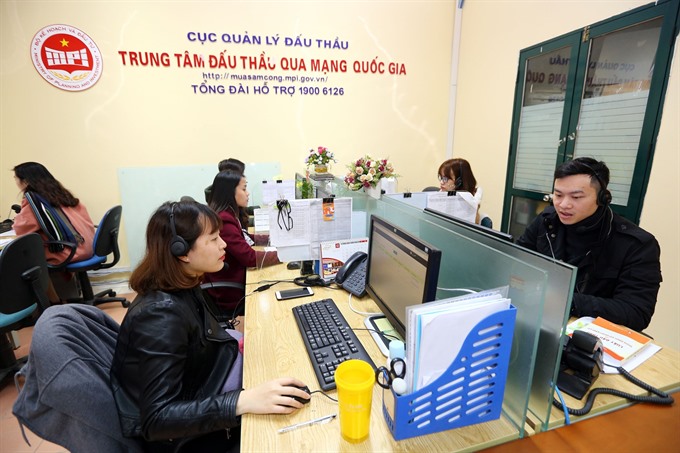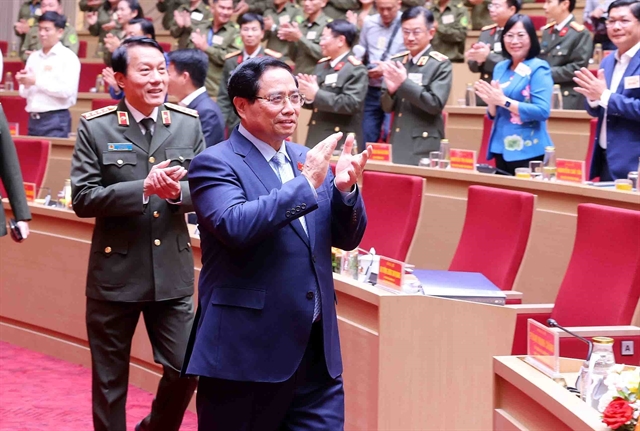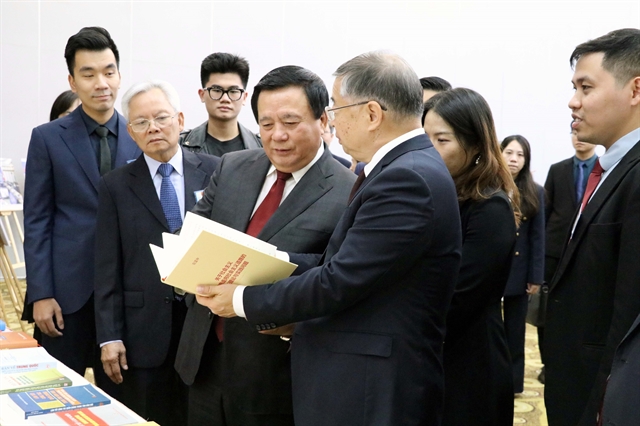 Economy
Economy

E-Government procurement has proven a good way to improve transparency, publicity, fairness and efficiency in bidding for State-funded projects since it was launched nationwide in 2016 to replace the use of paper documents.
 |
| Inside a working session of the national e-Government procurement centre under the Ministry of Planning and Investment. — VNA/VNS Photo Danh Lam |
HÀ NỘI — E-Government procurement has proven a good way to improve transparency, publicity, fairness and efficiency in bidding for State-funded projects since it was launched nationwide in 2016 to replace the use of paper documents.
According to Deputy Minister of Planning and Investment Vũ Đại Thắng, there have been nearly 23,000 contracts bid on through the e-Government procurement system, including 9,000 in the first seven months of 2018.
A number of contracts have values up to VNĐ200 billion and the new system had proven more cost-efficient than using paper documents, Thắng said at a forum on e-Government procurement on Wednesday.
“As procedures and bidding documents are digitised, the work process has got simpler, faster, more accurate and convenient. Plus, the national e-Government procurement system has created a fair, transparent environment for all contractors,” said Thắng.
“This is an effective instrument that could help remove corruption, save costs and State budget, and generate more benefits for both enterprises and society.”
Other speakers at the forum acknowledged the advantages brought by the e-Government procurement system.
“What we have changed is raising our awareness of electronic procurement. In 2009, we had only 10 contracts bid through the system. The number has kept rising sharply in both value and volume since then,” said Phạm Thúy Hà, head of procurement management unit at the State-owned conglomerate Vietnam Electricity (EVN).
The number of EVN contracts bid through the system rose to 200 in 2012, 4,000 in 2017 and 4,500 to date this year.
The advantages of electronic procurement were also seen in other localities and firms such as the northern province of Sơn La and Hà Nội Electro Mechanical Manufacturing JSC (HEM).
According to the province’s deputy director of planning and investment Hà Ngọc Châu, the number of e-bidding contracts increased from 53 contracts in 2017 to 115 contracts to date in 2018.
“E-procurement has made our projects more attractive to contractors. We are able to reduce costs, contractors don’t have to travel back and forth and the contracts are still assured of quality and schedule,” Châu said.
Deputy general director of HEM, Trần Tiến Lực, told the forum that his firm has participated in e-procurement for six years and found the system would eliminate opaqueness and make bidding more clear to the public, so enterprises would find procurement fair and attractive.
Existing problems
Despite the positive outcomes of the e-procurement system, the two biggest problems must be resolved are technology and public awareness, according to Nguyễn Anh Tuấn, deputy director of the ministry’s procurement management department.
“At the initial stage of the e-Government procurement system, most of the people were not very interested in the change because it would be harder for them to make dirty money from bidding competitions,” Tuấn said.
“Only 18 per cent of all bidding contracts have been implemented through the system. That number is far behind our expectations,” he said, adding that 41 of 119 agencies have not organised a single e-procurement bid through the system.
“We have reported the problem to the Government and proposed the Government attach more accountability to the leaders of those agencies so that e-procurement can really produce high quality.”
The Ministry of Planning and Investment has been working with the World Bank (WB) and the Asia Development Bank to improve the e-Government procurement system and provide more convenient functions for users, Tuấn said.
To draw more participation of enterprises to the e-Government procurement system, WB senior procurement specialist Adu Gyamfi Abunyewa said that the major problem is how enterprises are aware of e-procurement.
They need to see e-procurement as a good instrument to win bids and they need to acknowledge the fairness and transparency as well as seize the opportunities offered by e-procurement, he said. — VNS




.jpg)